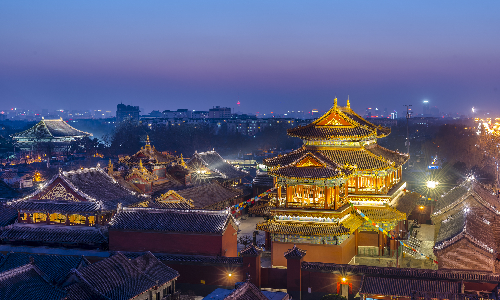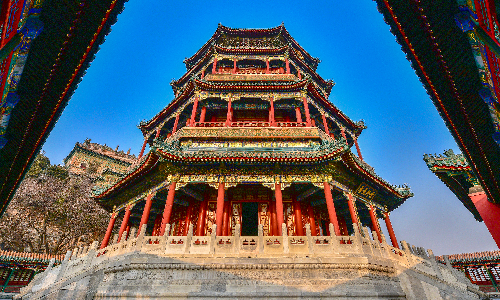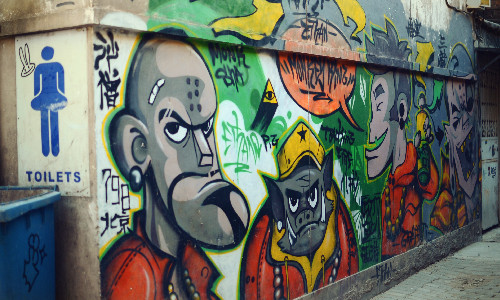Do you think it is so inconvenient to get a visa before visiting a country? Don’t worry about it now! The 144 hour visa free policy provide a good chance for you to have an unforgettable tour in China. As long as you don’t plan to stay in China for over 144 hours, you can come to China for a visit without getting a visa. The 144 hour visa China tour is so convenient for every foreign visitor who does not want to apply for a visa. They don’t need to apply for a visa and just need to prepare a few certificates. If you want to visit Beijing, the capital of China, you can enjoy the 144 hour visa Beijing tour without visa problems. Six days are enough for you to have a journey to Beijing and visit many attractions there, even though Beijing is not a small city. So please contact us quickly so that we can arrange a 6 days Beijing visa free tour for you as soon as possible.

Once you’ve arrived in Beijing, your local guide will be waiting for you at the airport. Then your local guide will take you to the hotel, and you will start your Beijing visa free tour tomorrow.
Beijing is the capital of China and has an area of 16,410.54 square kilometers. More than twenty million people are living in this city. Beijing is an ancient city with more than 3,000 years. Nowadays, there are still 7,309 cultural relics and historic sites in Beijing. There are imperial gardens, ancient dwellings, old temples, emperors’ tombs, and so on in this city. Besides, Beijing is famous for its traditional art. For, example, local people like enjoying Beijing Opera in their free time. Beijing Opera is a kind of traditional opera in China and was formed in the Qing Dynasty (1636-1912). Some local people are even good at Sugar Figure Blowing Art. They will heat sugar and then blow it into different shapes. This kind of art was formed in the Song Dynasty (960-1279) and was called candy opera at that time because it looked so magical when people were making the sugar figures.
After breakfast, you will go to visit Tian'anmen Square first. It is in the center of Beijing and covers an area of 440,000 square meters. On the square, there are many buildings, like Tian’anmen Rostrum, Monument to the People’s Heroes and Ornamental Columns. The most eye-catching building on the square is the Tian’anmen Rostrum. The height of it is 34.7 meters and it is built in the Ming Dynasty (1368-1644). It used to be the royal entrance of the Forbidden City during the Ming Dynasty and the Qing Dynasty. You will see two lively stone lions in front of Tian’anmen Rostrum. They are about 3 meters high. However, there is a small hole in the belly of a stone lion. There is a legend about it. A general called Li Zicheng once had a war against the army of the Qing Dynasty on the Tian’anmen Square. When he was about to win the war, a fierce lion suddenly ran to him. It is said that this lion is the guardian god of the Forbidden City. Li Zicheng was shocked but he was strong enough. He immediately drew his sword from its sheath and stabbed the lion in the belly. Then the lion fell to the ground, moaning. After the lion was hurt by Li Zicheng, it miraculously became a stone lion with a wound in its belly. People said that the stone lion is just the one you will see in front of Tian’anmen Rostrum.
After visiting Tian’anmen Square, we will take you to the Forbidden City (closed on Mondays). It is in the north of Tian’anmen Square. The Forbidden City covers an area of about 720,000 square meters with more than 70 palaces and more than 9,000 rooms. It has yellow roofs and red walls. It is said that no birds can stand on these yellow roofs. It is because the designers of the Forbidden City thought the birds’ excrement would damage buildings. So they designed arched roofs and used smooth glazed tiles to cover the roofs. That special radian and smoothness make the birds unable to stand on the roofs. Our guide will escort you to several halls to admire the exquisite designs of this ancient royal palace complex, where 24 Chinese emperors had lived.
After lunch, you will head north to Jingshan Park which is next to the Forbidden City. It used to be the imperial garden in the Ming and Qing Dynasties. The total area of it is about 230,000 square meters. In the east of Jingshan Park, you will see an old locust tree. It is a famous attraction in the Jingshan Park because the last emperor of the Ming Dynasty, Chongzhen, hung himself on the tree. At that time, his country had fallen into the rebel army’s hands. Chongzhen couldn’t accept the fact and committed suicide in this place. Later, people put a stone tablet there in memory of him.
Next, you will go to the Temple of Heaven. It is built in 1420 in the Ming Dynasty and covers an area of about 2.73 million square meters. It’s 3.7 times as large as the Forbidden City. Emperors of the Ming and Qing Dynasty offered sacrifice to Heaven every year in this place. Next to the south gate of the Temple of Heaven, you will see the Circular Mound Altar. There is a big stove in front of the Circular Mound Altar. After the sacrificial ceremony, the sacrificial offerings placed at the prime positions would be burned in this big stove. Smoke rises into the air, symbolizing the sending of these sacrificial offerings to heaven. Besides, there are also some small stoves. These small stoves were used to burn the sacrificial offerings placed at the secondary positions.

Today, it will take you about 1 hour to the Ming Tombs. They lie about 45 kilometers to the northwest of Beijing. The Ming Tombs are located in a small basin and there are some little rivers in front of them. The emperors of the Ming Dynasty, as well as their wives, kids, and few servants were buried there. Only a few tombs in this place are allowed to visit. The Chang Tomb is one of them. It is the best and largest tomb among all tombs in this place. The third emperor, Zhu Di, and his wife, Empress Xu were buried in this tomb. Zhu Di and Empress Xu loved each other very much. They often talked about national affairs together. When Zhu Di was dealing with national affairs, he often forgot to have lunch. Empress Xu always accompanied him and also didn’t have lunch until Zhu Di finished his work. When Empress Xu died, Zhu Di felt so sad and told his descendants that when he died, buried them together so that he could stay with his Empress Xu forever.
After lunch, we will drive you to the northwest. About 40 minutes later, you will arrive at the Badaling Great Wall. It is about 28 kilometers away from the Ming Tombs. Since 446, local people had started to build it. In 1505 in the Ming Dynasty, it was rebuilt again and the length of it reached about 650,000 meters. Now, it is 7,600 meters long. The Badaling Great Wall is the most important section of the whole Chinese Great Wall. There are 43 towers for shooting the enemies on this section of the Great Wall. Some towers are built with two floors. The second floor was used to shoot the enemy. You will see holes for shooting on the walls of the second floor. The first floor is for living and storing material resources. Besides, the highest tower on the Badaling Great Wall is Beibalou Tower with a height of 888 meters above sea level. This tower is also built with two floors. It is the best place to overlook the Badaling Great Wall.


After lunch, you will go to visit Hutongs. It refers to the small and narrow streets among Siheyuan(a traditional type of Chinese residence with a courtyard in the center and four houses in four directions). There used to be thousands of Hutongs in Beijing hundreds of years ago. Now there are only not more than 1, 000 Hutongs in Beijing. You will take a rickshaw to visit these traditional Hutongs. The rickshaw used to be a very popular vehicle in ancient China. Taking this kind of ancient vehicle to visit these old streets will be a special experience. Besides, you will also have a family visit when you visit Hutongs. You will be warmly welcomed by the family members. When you walk into the courtyard of the family, maybe you will see goldfish in a big water vat that is located in the middle of the yard, or you may hear doves cooing when you stand in the yard. It is a good chance to get to know the lifestyle of a Beijing Hutong family.
Next, we will take you to the Lama Temple. In 1694, Kangxi, the fourth emperor of the Qing Dynasty, ordered to build a house in this place for his fourth son, Yinzhen(the future fifth emperor of Qing Dynasty). When Yinzhen succeeded to the throne after the death of his father, he left here and lived in the Forbidden City. Later, this place became the Lama Temple after Yinzhen(Emperor Yongzheng) died. The Lama Temple covers an area of 66,400 square meters and has thousands of houses there. There are many precious historical treasures in the Lama Temple, such as carved wooden Five Hundred Arhats Mountain, niche for a statue of Buddha, and Sandalwood Giant Maitreya Buddha Statue. The carved wooden Five Hundred Arhats Mountain, for example, is about 5 meters high and 3.5 meters long. It looks large and delicate. These arhats on it are carved with different postures, like standing, sitting and lying. Besides, there is a wooden basin in front of it. It’s said that Qianlong, the sixth emperor of the Qing Dynasty, once used this wooden basin to have a bath when he was three days old.
After lunch, you will go to Silk Street. In 1978, there was only a small market with few stores selling articles for daily use on Silk Street. However, about thirty years later, it became an international shopping center. When you go there, you will see many stores selling silk, tea, art objects, jewels, and so on. Many celebrities have visited here before. In 2008, George Herbert Walker Bush, the former president of the USA, once came here with his daughter. They bought six robes made by hand at that time. In 2015, the president of the Czech Republic and his wife also came here and bought some pearls, silk scarves, neckties. In 2017, the First Belt and Road Forum for International Cooperation was held in Beijing. When presidents of different countries were having a meeting at that time, their wives were shopping on Silk Street. The wife of the president of Turkey once bought 51 goods within half an hour.


After breakfast, you will visit the Beijing Zoo. The total area of it is about 860,000 square meters. As the earliest zoo in China, it was first built in 1906 in the Qing Dynasty. There are more than 500 kinds of animals living in the zoo. Today, you will see pandas in the Panda House when you are in the Beijing Zoo. The Panda House was built in 1990 with an area of 10,000 square meters. It is divided into 3 sections. Adult pandas, teenage pandas, young pandas with their mother are living in different sections. When you go there, you may see cute pandas eating, playing, or sleeping.
After lunch, we will take you to visit the Summer Palace. It was an imperial garden in the Qing Dynasty. The summer in Beijing is hot. To avoid summer heat, the imperial family used to come here because the temperature here is favorable, hence its name. It covers an area of about 3 square kilometers, but three-quarters of it are covered with water. So you will see many bridges in this place. The longest bridge is 170 meters long and 8 meters wide, while its shortest bridge is only 40 centimeters long. In addition to the bridges, the Kunming Lake, Longevity Hill, Long Corridor, Seventeen-arch Bridge, Marble Boat, Bronze Ox, etc. are the attractions you cannot miss.


Today, you are going to visit the 798 Art Zone. There used to be many factories in this place. But now it becomes a famous art zone. Many artists have their studios in the 798 Art Zone. Some cake shops, bars, restaurants, clothing stores, and coffee shops are also located in this place. Besides, many old factories are not pulled down. Now the walls of these old factories are covered with graffiti. If you are tired, you may sit in a coffee shop and enjoy the graffiti on the opposite wall.
The 798 Art Zone is the last attraction of this China visa-free tour. After that, we will escort you to the airport. It’s time for you to say goodbye to China. The tour ends, but the good memories in China will never end.


Author: Xinli Zhang
Proofreader: Yan Liu
| City | Five Star hotel list | Four Star hotel list |
|---|---|---|
| Beijing | Sunworld Dynasty Hotel Beijing Wangfujing | Sunworld Hotel Wangfujing |
 |
![]() About your child or infant, please contact us for a discounted price.
About your child or infant, please contact us for a discounted price.



We started with a few days in Beijing & ended in Shanghai, from where we visited the Forbidden City and Great Wall. In between we visited Terra Cotta Warriors Museum, Panda Base, Shanghai Disneyland.

We had a wonderful holiday in China which will remain long in the memory. China is a breathtakingly beautiful country full of splendid temples and palaces, mountains and rivers, peaceful rural scenes and bustling shopping streets.
 QUICK ENQUIRY
QUICK ENQUIRY